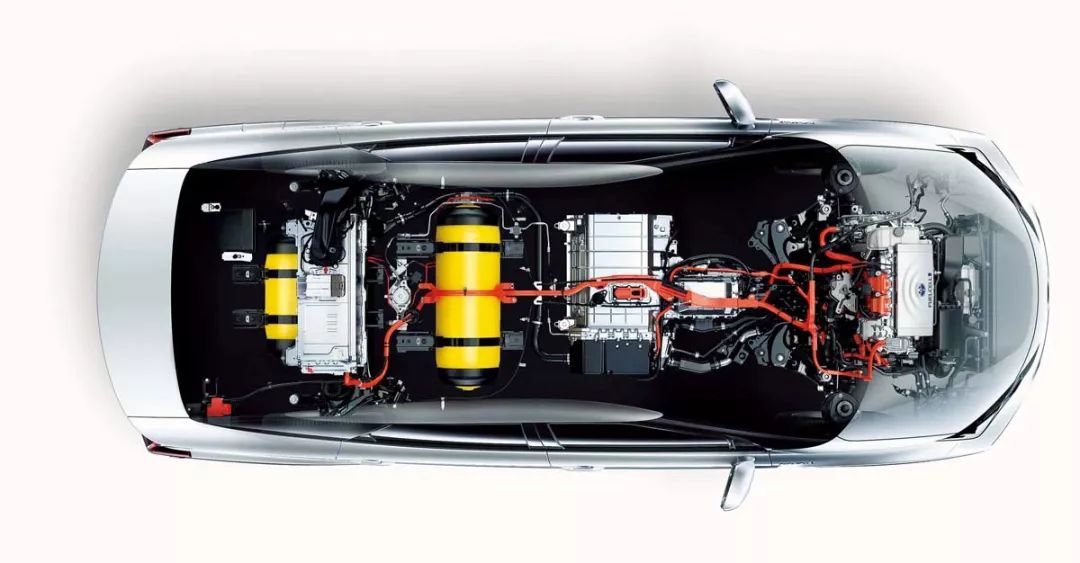Five basic judgments for the development of the hydrogen energy industry during the 14th Five-Year Plan
- Categories:News
- Author:
- Origin:
- Time of issue:2020-06-04
- Views:0
(Summary description)Thedevelopmentofthehydrogenenergyindustryisusheringinfavorablepolicies.Amongthemaintasksofthe2020NationalEconomicandSocialDevelopmentPlan,itisproposedforthefirsttimetoformulateanationalhydrogenenergyindustrydevelopmentstrategicplan. Hydrogenenergyisgainingindustryrecognitionasan"energy"withitsownadvantagessuchascleanliness,zeroemissions,andhighheat.Inthepastfewyears,Chinahassetoffaboominhydrogenenergy,anddozensoflocalgovernmentshaveissuedplanstosupportthedevelopmentofthehydrogenenergyindustry. Inthefaceofthe"14thFive-YearPlan",whatdevelopmenttrendwillthehydrogenenergyindustryusherininthenextfiveyears?Whatarethefactorsrestrictingthedevelopmentofthehydrogenenergyindustry?Thefirstelementnetworkandtheleadingthinktankhavemadethefollowingfivebasicjudgmentsonthedevelopmentofthe"14thFive-YearPlan"hydrogenenergyindustry. 01Thehydrogenenergyindustryisinaturbulentperiod,andthe"14thFive-YearPlan"willusherinnewdevelopmentopportunities Inrecentyears,thehydrogenenergyindustryhasusheredinmajordevelopmentopportunitiesinChina,mainlyduetotworeasons.First,comparedwithmorethantenyearsago,theproductioncostofhydrogenhasdroppedsignificantly.Progressandthesubstantialreductioninthecostofrenewableenergyperkilowatt-hourhavegiventhedevelopmentofthehydrogenenergyindustryamaterialfoundationforlarge-scaledevelopment.Second,therapidprogressofhydrogenfuelcellvehiclesinJapan,SouthKoreaandothercountrieshasallowedtheindustrytoseeahugedevelopmentspacefortheapplicationofhydrogenenergyinthetransportationfield. Inthecontextoflow-carbondevelopmentandenergytransformation,thehydrogenenergyindustryhasachievedabottom-updevelopmenttrendinChina,thatis,theindustry,localgovernments,andthesecondarymarketareveryactive,whichisalsodrivingtherapiddevelopmentofthehydrogenenergyindustryThebiggestfactor.Inparticular,theactiveinvolvementoflocalgovernmentshasfurtherestablishedthecompetitivelandscapeoftheindustryintheregionallayout. However,thecurrentdevelopmenttrendofhydrogenenergystillhasmajorconstraintsonthelocalgovernment.Ontheonehand,somelocalgovernmentsblindlydeploythehydrogenenergyindustryandhaveinsufficientunderstandingofhydrogenenergy,andtheremaybecertainsafetyrisksinthefuture. Ontheotherhand,hydrogenenergyrequiresalargeamountoffinancialsubsidiesfromlocalgovernmentsintheshortandmediumterm.Undertheinfluenceoftheepidemic,thefiscalrevenueoflocalgovernmentshasdroppedsharply,especiallyinsomeprovinceswithpooreconomies,whichisnotsuitableforlarge-scaledevelopmentofthehydrogenenergyindustryintheshortterm. 02Theapplicationofhydrogenenergyinthetransportationfieldwillusherinarelativelyrapidgrowthrateinthenext5-10years,buttherearemanyconstraintstotheexplosivegrowth Thereasonwhythenewroundofhydrogenenergyhasusheredinthedevelopmenttrendisthatahugedrivingforcecomesfromtheapplicationofhydrogenenergyinthetransportationfield,especiallytheperformanceofJapanandSouthKoreainthepassengercarmarket,whichopeneduptheimaginationofthehydrogencarindustryspace. Atpresent,JapaneseToyotaandHonda-basedautomakers,SouthKorea’sHyundaiandotherautomakershavealreadymass-producedpassengercars,especiallyToyota.Thetotalsalesofitsmiraifuelcellvehiclemarkethasexceeded10,000units.Tothemarket,anditsproductioncapacityisplannedtoexpand10timeswithintwoyears,whichhasarousedstrongmarketattention. Inthenext5-10years,fuelcellvehicleswillshowarapidgrowthtrendworldwide.TheUnitedStates,Japan,China,Europeandotherregionswillbethekeyareasforhydrogenfuelcellvehicles.Chinaiscurrentlydominatedbycommercialvehicles,whicharemainlyusedinlogistics,publictransportationandbuses.Itisexpectedtoachieverapiddevelopmentwiththesupportoflocalpolicies. However,whetherhydrogenvehiclescanachieveexplosivegrowth,therearestillseveralconstraintsthatneedtobebrokenthrough: Oneistherateofdeclineofhydrogencost.CurrentlyinBeijingandsurroundingmarkets,theterminalhydrogenenergymarketpriceis70yuan/kg,andthepriceintheYangtzeRiverDeltaandPearlRiverDeltaregionsis80-120yuan/kg.TaketheBeijingregionalbusasanexample.Thehydrogenenergyconsumptionper100kilometersis8kilograms,thatis,560yuanper100kilometers.Comparedwithgasolineanddieselvehicles,thecompetitivenessisseriouslyinsufficient. Thesecondiswhetherthesubsidypolicycanbecontinued.Atpresent,hydrogenfuelcellvehicleshaverelativelyhighfinancialsubsidies.Forgeneralbuses,iftheytravel20,000kilometers,theywillreceiveasubsidyofabout1millionyuan.Inthehydrogenenergyrefuelingprocess,Beijingandsurroundingareasreceiveagovernmentsubsidyofabout30yuanperkilogramofhydrogen.Whethertheabovesubsidycancontinueinthefuturewilldirectlyaffectthepopularityandutilizationofhydrogenenergyvehicles. 03Hydrogenrefuelingstationswillbebuiltonalargescaleduringthe"14thFive-YearPlan"period,andstate-ownedcapitalwillbethemainforceininvestinginhydrogenrefuelingstations Themostimportantlinkinthedevelopmentofhydrogenenergyvehiclesiswhetherthelayoutofhydrogenrefuelingstationsandrelatedinfrastructurecanbestartedquickly.Asoftheendof2019,Chinahasmorethan50hydrogenrefuelingstationsandmorethan10areunderconstruction.Therearedozenso
Five basic judgments for the development of the hydrogen energy industry during the 14th Five-Year Plan
(Summary description)Thedevelopmentofthehydrogenenergyindustryisusheringinfavorablepolicies.Amongthemaintasksofthe2020NationalEconomicandSocialDevelopmentPlan,itisproposedforthefirsttimetoformulateanationalhydrogenenergyindustrydevelopmentstrategicplan. Hydrogenenergyisgainingindustryrecognitionasan"energy"withitsownadvantagessuchascleanliness,zeroemissions,andhighheat.Inthepastfewyears,Chinahassetoffaboominhydrogenenergy,anddozensoflocalgovernmentshaveissuedplanstosupportthedevelopmentofthehydrogenenergyindustry. Inthefaceofthe"14thFive-YearPlan",whatdevelopmenttrendwillthehydrogenenergyindustryusherininthenextfiveyears?Whatarethefactorsrestrictingthedevelopmentofthehydrogenenergyindustry?Thefirstelementnetworkandtheleadingthinktankhavemadethefollowingfivebasicjudgmentsonthedevelopmentofthe"14thFive-YearPlan"hydrogenenergyindustry. 01Thehydrogenenergyindustryisinaturbulentperiod,andthe"14thFive-YearPlan"willusherinnewdevelopmentopportunities Inrecentyears,thehydrogenenergyindustryhasusheredinmajordevelopmentopportunitiesinChina,mainlyduetotworeasons.First,comparedwithmorethantenyearsago,theproductioncostofhydrogenhasdroppedsignificantly.Progressandthesubstantialreductioninthecostofrenewableenergyperkilowatt-hourhavegiventhedevelopmentofthehydrogenenergyindustryamaterialfoundationforlarge-scaledevelopment.Second,therapidprogressofhydrogenfuelcellvehiclesinJapan,SouthKoreaandothercountrieshasallowedtheindustrytoseeahugedevelopmentspacefortheapplicationofhydrogenenergyinthetransportationfield. Inthecontextoflow-carbondevelopmentandenergytransformation,thehydrogenenergyindustryhasachievedabottom-updevelopmenttrendinChina,thatis,theindustry,localgovernments,andthesecondarymarketareveryactive,whichisalsodrivingtherapiddevelopmentofthehydrogenenergyindustryThebiggestfactor.Inparticular,theactiveinvolvementoflocalgovernmentshasfurtherestablishedthecompetitivelandscapeoftheindustryintheregionallayout. However,thecurrentdevelopmenttrendofhydrogenenergystillhasmajorconstraintsonthelocalgovernment.Ontheonehand,somelocalgovernmentsblindlydeploythehydrogenenergyindustryandhaveinsufficientunderstandingofhydrogenenergy,andtheremaybecertainsafetyrisksinthefuture. Ontheotherhand,hydrogenenergyrequiresalargeamountoffinancialsubsidiesfromlocalgovernmentsintheshortandmediumterm.Undertheinfluenceoftheepidemic,thefiscalrevenueoflocalgovernmentshasdroppedsharply,especiallyinsomeprovinceswithpooreconomies,whichisnotsuitableforlarge-scaledevelopmentofthehydrogenenergyindustryintheshortterm. 02Theapplicationofhydrogenenergyinthetransportationfieldwillusherinarelativelyrapidgrowthrateinthenext5-10years,buttherearemanyconstraintstotheexplosivegrowth Thereasonwhythenewroundofhydrogenenergyhasusheredinthedevelopmenttrendisthatahugedrivingforcecomesfromtheapplicationofhydrogenenergyinthetransportationfield,especiallytheperformanceofJapanandSouthKoreainthepassengercarmarket,whichopeneduptheimaginationofthehydrogencarindustryspace. Atpresent,JapaneseToyotaandHonda-basedautomakers,SouthKorea’sHyundaiandotherautomakershavealreadymass-producedpassengercars,especiallyToyota.Thetotalsalesofitsmiraifuelcellvehiclemarkethasexceeded10,000units.Tothemarket,anditsproductioncapacityisplannedtoexpand10timeswithintwoyears,whichhasarousedstrongmarketattention. Inthenext5-10years,fuelcellvehicleswillshowarapidgrowthtrendworldwide.TheUnitedStates,Japan,China,Europeandotherregionswillbethekeyareasforhydrogenfuelcellvehicles.Chinaiscurrentlydominatedbycommercialvehicles,whicharemainlyusedinlogistics,publictransportationandbuses.Itisexpectedtoachieverapiddevelopmentwiththesupportoflocalpolicies. However,whetherhydrogenvehiclescanachieveexplosivegrowth,therearestillseveralconstraintsthatneedtobebrokenthrough: Oneistherateofdeclineofhydrogencost.CurrentlyinBeijingandsurroundingmarkets,theterminalhydrogenenergymarketpriceis70yuan/kg,andthepriceintheYangtzeRiverDeltaandPearlRiverDeltaregionsis80-120yuan/kg.TaketheBeijingregionalbusasanexample.Thehydrogenenergyconsumptionper100kilometersis8kilograms,thatis,560yuanper100kilometers.Comparedwithgasolineanddieselvehicles,thecompetitivenessisseriouslyinsufficient. Thesecondiswhetherthesubsidypolicycanbecontinued.Atpresent,hydrogenfuelcellvehicleshaverelativelyhighfinancialsubsidies.Forgeneralbuses,iftheytravel20,000kilometers,theywillreceiveasubsidyofabout1millionyuan.Inthehydrogenenergyrefuelingprocess,Beijingandsurroundingareasreceiveagovernmentsubsidyofabout30yuanperkilogramofhydrogen.Whethertheabovesubsidycancontinueinthefuturewilldirectlyaffectthepopularityandutilizationofhydrogenenergyvehicles. 03Hydrogenrefuelingstationswillbebuiltonalargescaleduringthe"14thFive-YearPlan"period,andstate-ownedcapitalwillbethemainforceininvestinginhydrogenrefuelingstations Themostimportantlinkinthedevelopmentofhydrogenenergyvehiclesiswhetherthelayoutofhydrogenrefuelingstationsandrelatedinfrastructurecanbestartedquickly.Asoftheendof2019,Chinahasmorethan50hydrogenrefuelingstationsandmorethan10areunderconstruction.Therearedozenso
- Categories:News
- Author:
- Origin:
- Time of issue:2020-06-04
- Views:0
Scan the QR code to read on your phone
QR code

Mobile site
rendong
Online message
Copyright © Jiangxi Rendong New Energy Co., Ltd. Gan ICP No. 20007021-2 www.300.cn



